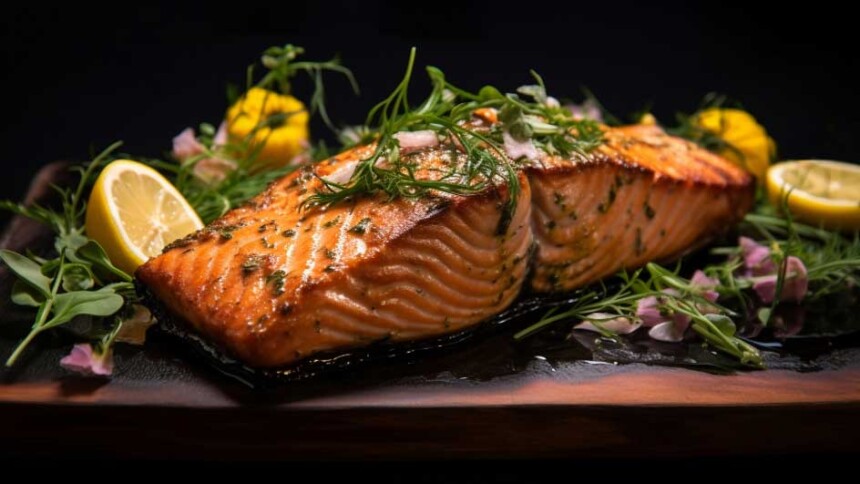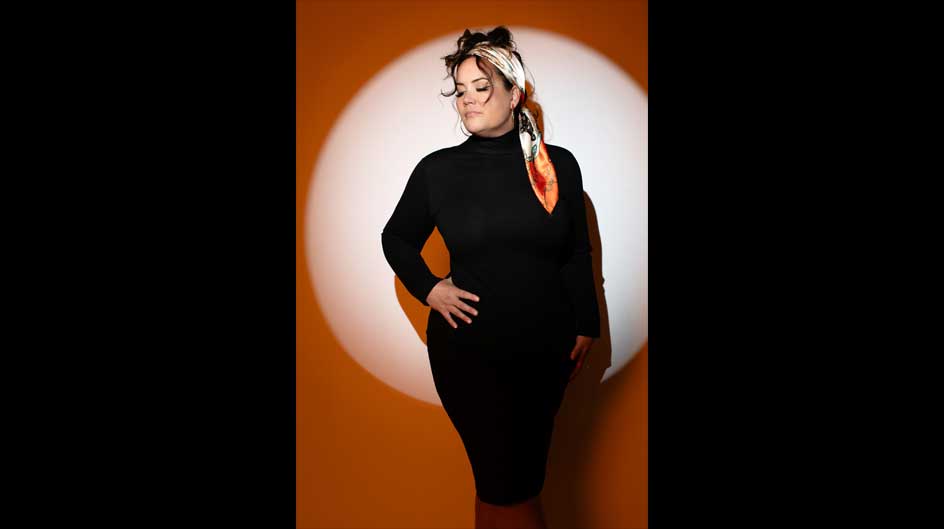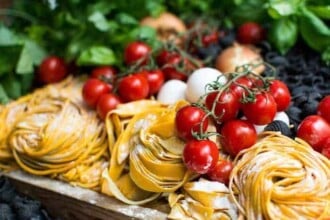Are you prepared to step up your culinary skills and wow your dinner guests with an exquisite salmon dish? You don’t need to look any farther since we have all the advice you need to prepare a delicious salmon dish that will have guests requesting seconds.
Understanding the Factors that Affect Salmon Cooking
Achieving a flawless salmon dinner requires more than just following a recipe. You need to understand the factors that can make or break your dish. These factors can be categorized into four main areas: freshness, thickness, fat content, and cooking method.
- Freshness
- Thickness
- Fat content
- Cooking method
This knowledge will help you make informed decisions when preparing your salmon, ensuring a delicious and memorable dining experience.
The Importance of Freshness
There’s no substitute for fresh salmon when it comes to flavor and texture. Fresh salmon has a higher moisture content, which helps it stay juicy and tender during cooking. Make sure to purchase your salmon from a reputable source and check the expiration date to ensure you’re getting the freshest possible fish.
The Role of Thickness in Cooking Time
Freshness aside, the thickness of your salmon fillet plays a significant role in determining the cooking time. Thicker fillets take longer to cook, while thinner ones cook more quickly.
That being said, it’s crucial to adjust your cooking time according to the thickness of your fillet. A general rule of thumb is to cook salmon for 4-6 minutes per inch of thickness. This will ensure that your salmon is cooked through but still retains its moisture and flavor.
How Fat Content Impacts Flavor and Texture
Factors like fat content can greatly impact the flavor and texture of your salmon. Fatty salmon tends to be more tender and flavorful, while leaner salmon can be dry and bland.
It’s worth noting that fatty salmon is also more prone to overcooking, so be sure to monitor the cooking time closely. On the other hand, leaner salmon can benefit from a slightly longer cooking time to ensure it’s cooked through.
Note, understanding these factors is key to achieving a flawless salmon dinner. By taking them into account, you’ll be well on your way to creating a culinary masterpiece that will impress even the most discerning palates.
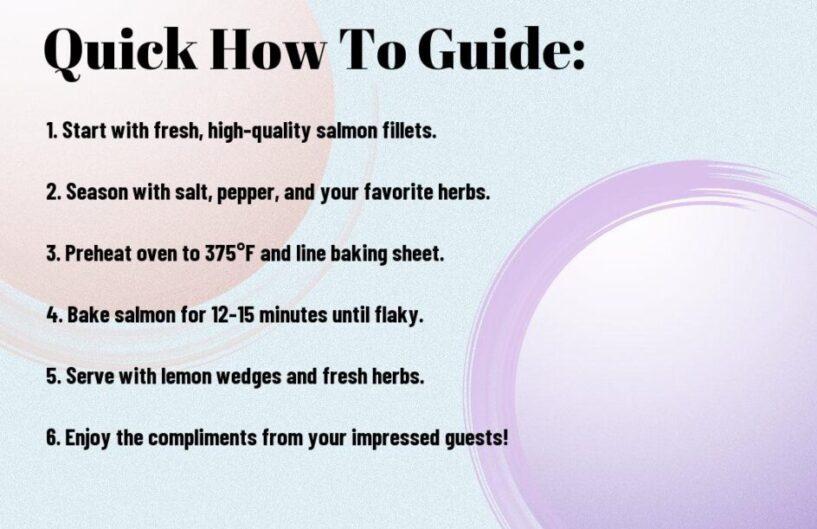
Prepare Your Salmon Properly
It’s necessary to start with high-quality salmon and prepare it correctly to ensure a flawless dinner. According to experienced chefs and home cooks, proper preparation is key to achieving a deliciously cooked salmon. As one Reddit user asked, “Salmon cooking tips sought from a chef or good cook” (read more). By following these simple steps, you’ll be well on your way to creating a culinary masterpiece.
How to Choose the Right Cut of Salmon
There’s a wide variety of salmon cuts available, each with its unique characteristics and cooking requirements. When identifying a cut, consider the thickness and fat content, as these factors will affect the cooking time and flavor. Opt for a fresh, sashimi-grade cut for the best results.
Tips for Deboning and Filleting Salmon
On the path to preparing perfect salmon, deboning and filleting are crucial steps. Here are some necessary tips to keep in mind:
- Use a sharp knife to make precise cuts and avoid tearing the fish.
- Remove the bloodline to prevent a strong flavor and texture.
- Debone carefully to avoid breaking the fillet.
Recognizing the importance of proper deboning and filleting will elevate your salmon dish from ordinary to extraordinary. A well-executed fillet will ensure even cooking and a tender, flaky texture.
A crucial aspect of deboning and filleting is to work gently and patiently. Take your time to remove the bones and skin, and use a sharp knife to make clean cuts. This will help prevent tearing the fish and ensure a smooth, even surface.
- Work from the tail end to remove the bones and skin.
- Use a gentle sawing motion to cut through the bones.
- Rinse the fillet under cold water to remove any remaining scales or debris.
Recognizing the importance of proper deboning and filleting will elevate your salmon dish from ordinary to extraordinary.
The Importance of Pat Drying for Even Cooking
While it may seem like a minor step, pat drying your salmon fillet is crucial for even cooking. Excess moisture can prevent the fish from searing properly, leading to a lackluster dish.
Your goal is to remove excess moisture without stripping the fish of its natural oils. Gently pat the fillet dry with a paper towel, paying extra attention to the skin side (if it has skin). This simple step will ensure a crispy crust and a tender interior.
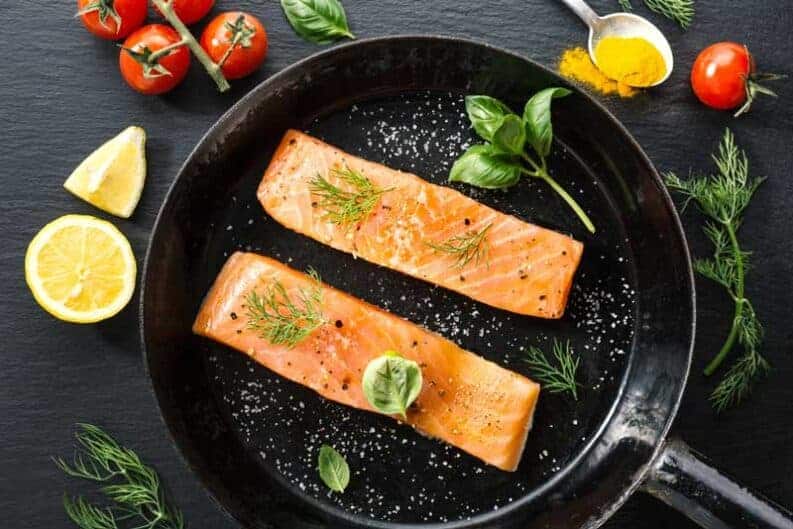
Using the Right Pan for the Job
Once again, the key to a flawless salmon dinner lies in the details. One of the most crucial decisions you’ll make is choosing the right pan for the job. The type of pan you use can greatly impact the final result, so it’s necessary to select one that complements the delicate flavor and texture of salmon.
The Benefits of Non-Stick Pans for Delicate Fish
While non-stick pans may not be the first choice for many cooks, they are an excellent option for cooking salmon. The non-stick surface prevents the fish from sticking and forming unwanted crusts, ensuring a tender and flaky texture. Plus, non-stick pans require less oil, making them a healthier option for your salmon dinner.
How to Season a Cast Iron Pan for Salmon Cooking
While cast iron pans may require more maintenance than other options, they can provide a rich, caramelized crust on your salmon. To season a cast iron pan, simply apply a thin layer of cooking oil and place it in the oven at 350°F (175°C) for an hour.
Plus, a well-seasoned cast iron pan can last for decades with proper care, making it a worthwhile investment for any serious cook. Just be sure to avoid using abrasive cleaners or scouring pads, as they can strip away the seasoning and require you to start from scratch.
The Advantages of Cooking with Stainless Steel
One of the biggest advantages of cooking with stainless steel is its durability. Unlike non-stick pans, stainless steel pans can withstand high heat and metal utensils without sacrificing performance. Additionally, stainless steel pans are easy to clean and resistant to corrosion, making them a low-maintenance option for busy cooks.
It’s also worth noting that stainless steel pans can brown food evenly, which is necessary for achieving that perfect crust on your salmon. Simply preheat the pan over medium-high heat, add a small amount of oil, and cook your salmon to desired doneness.
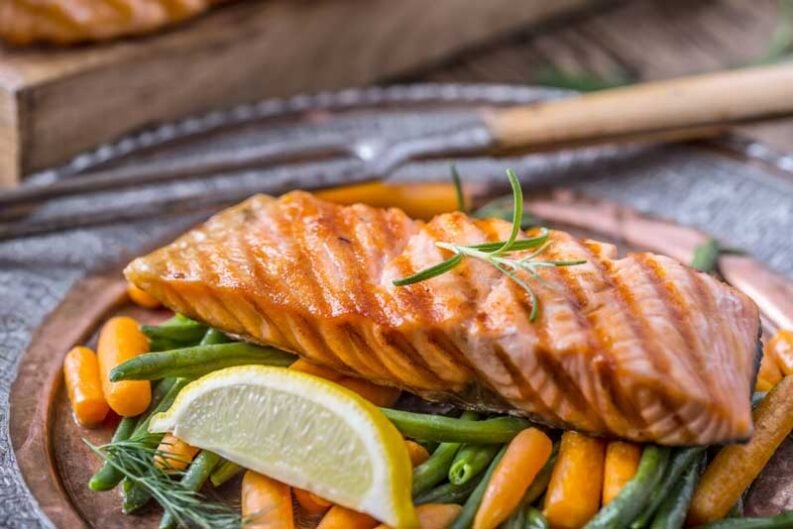
How to Avoid Overcooking Salmon
Despite the simplicity of cooking salmon, it’s surprisingly easy to overcook it, leading to a dry and tough final product. To ensure your salmon dinner turns out perfectly, it’s crucial to understand how to avoid overcooking.
The Importance of Internal Temperature Control
Temperature control is key when cooking salmon. To achieve the perfect doneness, you need to cook the salmon to an internal temperature of at least 145°F (63°C) for medium-rare, 160°F (71°C) for medium, and 170°F (77°C) for well-done.
Internal Temperature Guide for Salmon
| Cooking Level | <strong/Internal Temperature |
| Medium-Rare | 145°F (63°C) |
| Medium | 160°F (71°C) |
| Well-Done | 170°F (77°C) |
Visual Cues for Doneness: Flaking and Opacity
Temperature aside, there are visual cues you can rely on to determine if your salmon is cooked to perfection. When you insert a fork or knife into the thickest part of the fish, it should flake easily and be opaque.
Control the cooking process by checking the salmon frequently, especially during the last few minutes of cooking. This will ensure you catch it at the perfect moment, just before it becomes overcooked.
The Risks of Overcooking: Dryness and Toughness
While it’s easy to get caught up in the excitement of cooking, don’t let your attention waver, or you risk ending up with a dry and tough piece of salmon.
Risks of overcooking include losing the delicate flavor and texture of the salmon, making it unpalatable and unappetizing. To avoid this, make sure to remove the salmon from heat as soon as it reaches the desired internal temperature.

The Best Salmon Dinner Cooking Methods
Keep in mind that the cooking method you choose can make all the difference in the flavor and texture of your salmon dinner. Here are three popular methods to achieve a flawless salmon dish:
Pan-Seared Salmon: Tips for a Crispy Crust
With a hot skillet and a few simple techniques, you can achieve a crispy crust on your salmon fillet. To get started, make sure your salmon is dry and seasoned, then heat a skillet over medium-high heat with a small amount of oil. Add the salmon, skin side up, and cook for 3-4 minutes. Flip and cook for an additional 3-4 minutes, or until cooked through. Knowing the right temperature and cooking time is crucial for a crispy crust.
- Medium-high heat is necessary for a crispy crust.
- Dry and seasoned salmon helps the crust form.
- Don’t overcrowd the skillet, cook in batches if necessary.
Oven-Roasted Salmon: How to Achieve Moisture and Flavor
On the other hand, oven-roasting is a great way to cook salmon without sacrificing moisture and flavor. To achieve the perfect roast, preheat your oven to 400°F (200°C) and season your salmon with your desired herbs and spices.
To take your oven-roasted salmon to the next level, make sure to line your baking sheet with foil or parchment paper to prevent sticking. You can also add some aromatics like lemon slices or herbs to the pan for added flavor.
Grilled Salmon: Mastering the Art of High-Heat Cooking
On a warm summer evening, grilled salmon is a refreshing and flavorful option. To grill like a pro, preheat your grill to medium-high heat, about 400°F (200°C). Season your salmon with your desired herbs and spices, then place it on the grill, skin side down.
Cooking grilled salmon requires attention to timing and temperature. Make sure to cook for 4-6 minutes per side, or until cooked through. Also, keep an eye on the internal temperature, which should reach 145°F (63°C) for medium-rare.
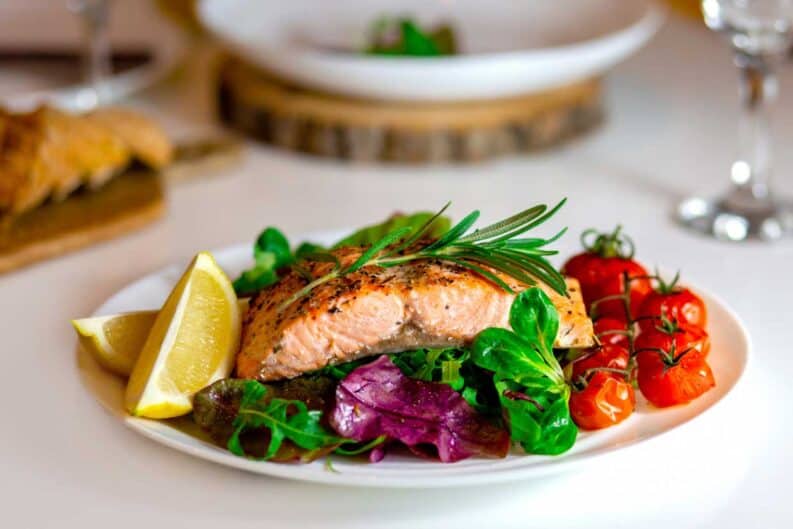
Additional Tips for a Flawless Salmon Dinner
After mastering the basics of cooking salmon, it’s time to take your dish to the next level with these additional tips:
- Don’t overcrowd the pan, as this can lower the temperature and prevent even cooking.
- Use a meat thermometer to ensure your salmon reaches a safe internal temperature of 145°F (63°C).
- Don’t press down on the fish with your spatula, as this can squeeze out juices and make the fish dry.
After incorporating these tips into your cooking routine, you’ll be well on your way to serving a flawless salmon dinner.
How to Add Flavor with Marinades and Sauces
If you want to take your salmon to the next level, try using a marinade or sauce to add extra flavor. Acidic ingredients like lemon juice or vinegar can help break down the proteins and add brightness to the dish, while herbs and spices can add depth and complexity.
The Importance of Resting Time for Juicy Fish
There’s a reason why chefs always let their meat rest before serving – it allows the juices to redistribute and the protein to relax, resulting in a more tender and juicy final product.
It’s especially important to let salmon rest, as it can become dry and tough if cooked for too long. By letting it rest for a few minutes, you’ll be rewarded with a moist and flaky texture that will impress your dinner guests.
Pairing Salmon with Complementary Ingredients
Flawless pairings can elevate your salmon dish from good to great. Try pairing your salmon with ingredients that complement its rich flavor, such as bright and citrusy flavors or earthy and umami flavors.
The key to pairing salmon with complementary ingredients is to find balance and harmony. By combining your salmon with ingredients that enhance its natural flavor, you’ll create a dish that’s greater than the sum of its parts.
Summing up
Presently, you’re equipped with the important tips and tricks to cook a flawless salmon dinner that will impress your guests and satisfy their taste buds. You’ve learned how to select the freshest salmon, prepare it to perfection, and pair it with complementary ingredients to create a culinary masterpiece. With your newfound skills, you’re ready to take your cooking to the next level and make your salmon dinner a memorable experience for everyone involved.
FAQ
Q: What type of salmon is best suited for cooking a flawless dinner?
A: Concerning cooking a flawless salmon dinner, the type of salmon you choose can make all the difference. We recommend using wild-caught Alaskan or Pacific salmon, as they have a higher fat content and a more robust flavor profile compared to farmed salmon. Additionally, look for salmon with a high freshness rating, such as sashimi-grade or previously frozen, to ensure food safety and optimal flavor.
Q: How do I prevent my salmon from becoming overcooked and dry?
A: Overcooking is a common mistake when cooking salmon, but it’s easily avoidable. To prevent dryness, make sure to cook your salmon to an internal temperature of 120°F – 125°F (49°C – 52°C) for medium-rare, 130°F – 135°F (54°C – 57°C) for medium, and 140°F – 145°F (60°C – 63°C) for well-done. Use a meat thermometer to ensure accuracy. Also, don’t overcrowd your pan, as this can lower the temperature and cause the salmon to cook unevenly. Finally, don’t press down on the salmon with your spatula, as this can squeeze out juices and make it dry.
Q: What are some tips for adding flavor to my salmon without overpowering it?
A: Adding flavor to your salmon without overpowering it is all about balance. Start by seasoning your salmon with salt, pepper, and a squeeze of fresh lemon juice. Then, try adding aromatics like garlic, ginger, or onions to your pan before cooking the salmon. You can also add a flavorful sauce, such as a citrus-herb butter or a Asian-inspired glaze, during the last minute of cooking. Finally, consider adding some acidity, like a splash of vinegar or a squeeze of fresh citrus, to brighten up the flavors and balance out the richness of the salmon.
